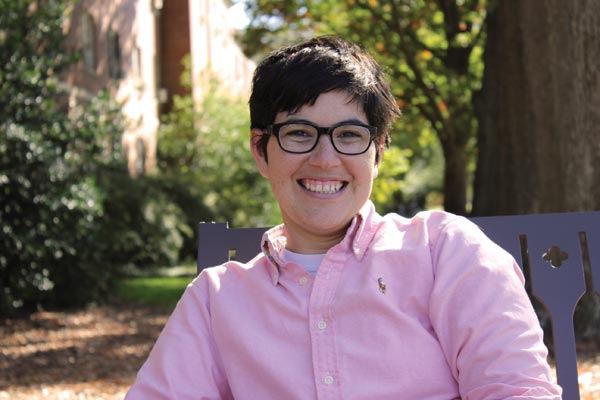Superbugs on the Move
In 2007, Beth Feingold ’01, a PhD student at the Johns Hopkins Bloomberg School of Public Health, sat down to give her full attention to a newly published scientific paper. Dutch researchers had reported that people who worked with farm animals were more likely to carry a new bacterial strain—an antibiotic-resistant one associated with livestock.
Often called superbugs, antibiotic-resistant pathogens are one of the most challenging public health problems today. And, the bug Feingold was reading about—MRSA (methicillin-resistant Staphylococcus aureus)—kills an estimated 18,000 Americans each year. The widespread use of antibiotics is thought to bolster bacteria’s resistance.
Most MRSA infections are contracted in hospitals, but farms have proven to be another emerging source, and the new strain of MRSA associated with livestock has spread far and wide. First described in the Netherlands in 2003, that strain now accounts for more than 40 percent of human MRSA cases in that country. It has traveled elsewhere in Europe, and in Asia and the U.S.—it has now been found in Iowa pigs and in farm workers.
Feingold wondered whether those who lived near pig farms, but were not farm workers, also risked coming into contact with the new pathogen.
She mentioned her growing curiosity to her adviser—fellow alumna Ellen Kovner Silbergeld ’67, professor of environmental health sciences and epidemiology at Johns Hopkins. Silbergeld, a MacArthur Fellow, is known for her work revealing how lead in gasoline and paint contributes to behavioral health problems in children. But her more recent work documents the connections between modern industrial methods of raising food animals and the spread of antibiotic-resistant bacteria such as MRSA.
Silbergeld sug-gested that Feingold reach out to the study’s senior author, Jan Kluytmans of VU University Medical Center in Amsterdam.
Feingold not only contacted Kluytmans but also traveled to the Netherlands to collaborate with the group and do precisely the spatial analysis she wanted. She also reanalyzed the Dutch researchers’ data.
She discovered that the more animals in a region, the more likely that people who lived in the same region—even those who had not come in contact with farm animals—carried livestock-associated MRSA in their noses. That’s a worrisome trend because MRSA can cause severe illness if it finds its way past the barrier of one’s skin.
Her paper, with Silbergeld and the Dutch researchers as co-authors, was published in the November 2012 issue of Emerging Infectious Diseases, the medical journal of the Centers for Disease Control and Prevention.
“It’s a big finding that everybody in the community is at increased risk,” Silbergeld says. “Now, how is it transmitted? We have some ideas, but we’re trying to ask this in the most rigorous way possible.”
Feingold has since earned her PhD in environmental health sciences and is currently a postdoctoral associate at Duke University’s Nicholas School of the Environment and the Duke Global Health Institute. She is busy researching environmental health risks related to shifts in climate, land use, and migration in the Peruvian Amazon. But Feingold says she hasn’t tired of working on public health issues related to industrial food and animal production—in fact, she’s still working on projects with Silbergeld and others between trips to the jungle.
“One of the biggest lessons I learned from working with Ellen was that you can have multiple research interests,” she says. “What may look like disparate paths to others are actually all tied together. For me, they’re linked by the use of common methodologies, using spatial analysis to leverage public health.”
Jill U. Adams, an Albany, New York–based writer, covers science, health, and nature. She has written for Audubon, Discover, and the Los Angeles Times.
